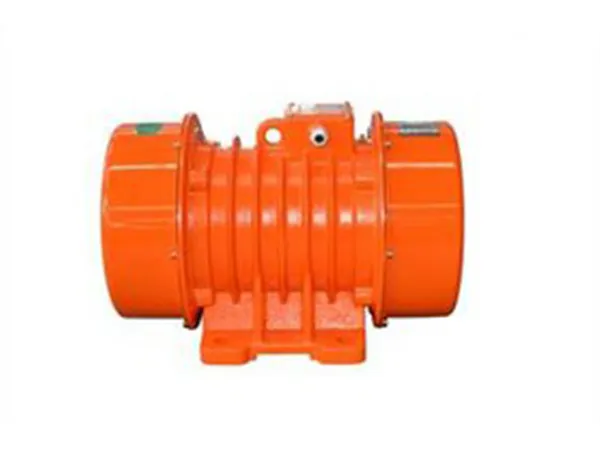time:Sep 11, 2024 source:ZEXCIT
Vibration motors are devices that generate mechanical vibrations for a variety of applications, such as haptic feedback in devices, industrial machinery, and consumer electronics. There are several types of vibration motors, each with distinct characteristics, designs, and applications.

Description: ERM motors are DC motors with an unbalanced weight attached to the shaft. When the motor rotates, the centrifugal force generated by the offset weight causes the motor to vibrate.
Applications: Widely used in mobile phones, pagers, wearable devices, and other small handheld gadgets for haptic feedback.
Advantages: Simple design, cost-effective, easy to control the vibration intensity by varying the speed of rotation.
Disadvantages: The vibration is not uniform due to the rotating mass.
Description: LRAs consist of a magnetic mass suspended by a spring, which oscillates when an AC signal is applied. They are tuned to resonate at a specific frequency, providing a strong vibration at a particular resonance.
Applications: Used in smartphones, tablets, gaming controllers, wearables, and other devices requiring precise haptic feedback.
Advantages: Faster response time, better energy efficiency, and more precise control over vibrations than ERM motors.
Disadvantages: More complex control circuitry is required, and they are typically more expensive than ERM motors.
Description: These are a type of ERM motor that is flat and coin-shaped. The eccentric mass is embedded in a circular housing, making it compact and easy to integrate into slim devices.
Applications: Commonly used in portable devices like smartphones, smartwatches, and fitness bands.
Advantages: Compact size, low power consumption, easy to mount.
Disadvantages: Limited vibration strength due to their small size.

Description: These motors use a brushless DC motor design, where the rotation of a magnet induces vibration without physical brushes. The vibration mechanism is similar to ERM but with higher efficiency and durability.
Applications: Industrial equipment, automotive applications, and more demanding environments requiring long life and reliability.
Advantages: Longer lifespan, lower maintenance, higher efficiency, and better control.
Disadvantages: Higher initial cost and more complex control systems.
Description: Pancake vibration motors, also known as flat vibration motors, are a type of ERM motor shaped like a pancake. They are similar to coin vibration motors but generally larger.
Applications: Used in wearable devices, IoT devices, and haptic interfaces where a slim profile is required.
Advantages: Flat design, relatively strong vibration for their size.
Disadvantages: Can be bulkier than coin vibration motors in some applications.
Description: These motors use an electromagnetic coil and an armature to create vibrations. When an electric current passes through the coil, it creates a magnetic field that moves the armature, resulting in vibration.
Applications: Used in specialized applications like scientific instruments, medical devices, and industrial machinery.
Advantages: Precise control over vibration frequency and amplitude.
Disadvantages: Typically more complex and expensive than other types.

Description: Piezoelectric motors use piezoelectric materials that change shape when an electric field is applied, generating vibration. These motors can produce fine and high-frequency vibrations.
Applications: High-precision devices such as medical equipment, specialized industrial applications, and some consumer electronics.
Advantages: Low power consumption, high precision, and very compact size.
Disadvantages: Limited vibration strength, higher cost, and more complex drive requirements.
Summary:
Each type of vibration motor has its own advantages and disadvantages, making them suitable for different applications. When selecting a vibration motor, factors such as size, vibration strength, power consumption, response time, and cost must be considered.
What are the specifications and models of vibrating feeder?
What is the difference between linear and circular vibrating screen?

MVT series vibrator compared with ordinary vibrators, MVT series vibrators have wider vibration coverage and more convenient installation. MVT series vibrators are widely used in coal, mining, petroleum, foundry, food processing and other industries. Used on vibrating screens, feeders and other equipment.
READ MORE
The VBH series vibration motors are specialized electric motors designed for generating controlled vibrations in various industrial applications. These motors are known for their reliability, durability, and efficiency, making them suitable for integration into equipment such as vibrating screens, feeders, conveyors, compactors, and sieves.
READ MORE
VB series vibration motors are used as the excitation source of various types of vibration machinery, such as vibrating feeders, vibrating conveyors, vibrating ore discharge machines, vibrating sand shakers, vibrating screens, and vibration anti-blocking devices for silos, etc., and are widely used Electricity, building materials, coal, mining, metallurgy, chemical industry, light industry, casting and other industries.
READ MORECopyright © 2023 Xinxiang Zongyuan Machinery Equipment Co., Ltd. | All Rights Reserved.